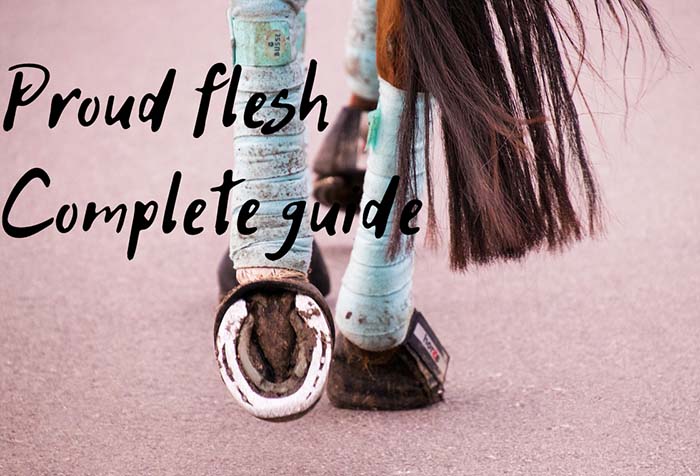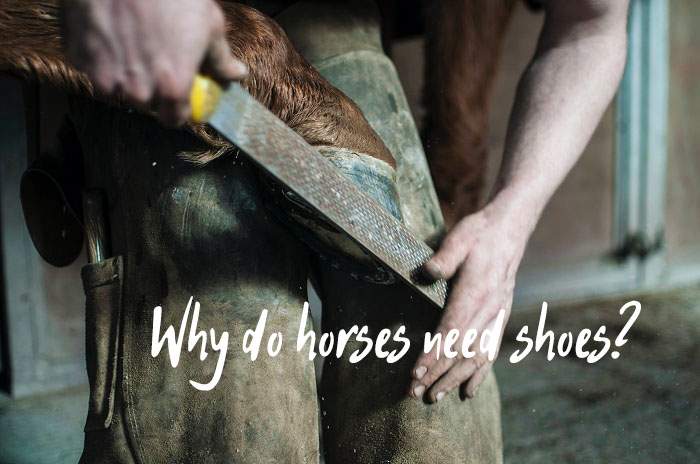How to Tell If Your Horse Is Cold and What to Do About It

Most horses are well-adapted to the cold and will cope with the winter months without too many issues. However, depending on their breed, their health, and their age, some horses might become too cold for their own good, and this could lead to some serious complications such as hypothermia. In order to become a responsible horse owner, one must be able to tell when their horse is too cold by reading its body language and other cues.
If your horse is too cold, it will likely start to shiver in order to create body heat. It might also tend to huddle up with other horses and tuck its tail between its legs. Most importantly, its body temperature will drop below 99.6 degrees Fahrenheit or 37.6 Celsius. You can easily measure your horse’s temperature with an infrared thermometer.
What could cause a horse to become too cold?
Apart from the obvious, which is a sudden drop in outdoor temperature, a horse might become too cold for a variety of reasons. One of the main reasons is a lack of a proper winter coat, as well as a lack of body fat. Furthermore, a horse could lose body temperature if it doesn’t receive enough food.
As I mentioned before in my article about horse feeding, a horse’s digestive system is designed to run constantly. The process of breaking down food creates body heat, so a well-fed horse is a warm and happy horse. If the equine doesn’t receive enough food to keep the process going, its body temperature is going to drop. One of the best things you can feed your horse to increase its body temperature is hay, as that takes a while to digest.
How to tell if your horse is shivering.
If your horse is shivering from being cold, it will look as if it has small muscle spasms. Horses shiver in the same way as we do – their bodies contract and relax their muscles quickly and involuntarily in order to produce body heat. Keep in mind that shivering is more of a “last stand” when it comes to heat conservation. At first, a horse will increase its metabolic rate as temperatures drop, and its body will also decrease blood flow.
Each horse has its own temperature threshold at which shivering starts. Thinner horses or those that have trouble keeping their body weight up will get cold faster and will shiver at higher temperatures than a large, heavy, well-fed horse. Then there’s the issue of a good winter coat, but we’ll touch on that in a second.
What can you do to help your horse if it gets too cold?
If your horse is cold, there are several steps that you can take to improve its comfort and to help it get warm again. In some cases, you might need to call a veterinarian, particularly if you suspect hypothermia might come into play. If you don’t have access to a vet, here are some measures that you can take yourself.
- Shelter your horse. Obviously, you’ll want to make sure your horse is sheltered from the elements, and the best way to do that is to take it to a stable or barn. If your horse has been working or has been sitting in the rain/snow, it’s definitely a good idea to dry its coat as well. The stable should be well ventilated but warm, and it should have a dry, clean area where your horse can lay down if it wants to.
- Use a horse blanket. Horse blankets will keep your horse warm if the need arises. There are plenty to choose from, but not all of them are of the same quality. Ideally, you’ll need a horse blanket that’s both warm and breathable. Before applying the horse blanket, make sure that your horse is dry and that the blanket fits well in order to avoid chafing. If you use a horse blanket a few times at the beginning of the cold season, you’ll have to use it regularly until it’s warm outside once more. That’s because the blanket will make it difficult for your horse’s coat to adapt to the cold.
- Feed your horse. As I mentioned above, a horse will get cold faster if it has an empty stomach. If your horse gets cold, make sure to feed it some hay in order to keep its digestive system running around the clock.
- Give it some warm water. Sometimes, when temperatures drop too much or too suddenly, a horse’s water supply might freeze over without warning. Horses have no way to go through the thin layer of eyes that forms on top of a water tray. For peace of mind, make sure to check the horse’s water supply regularly, and maybe even consider investing in a water heater. Dehydration will impact a horse’s ability to regulate its temperature. It’s very important to make sure that your horse is able to drink enough water throughout its day no matter the season.
When is it too cold for a horse to be out?
Horses that come from harsh climates are well-equipped to handle low temperatures, but horses from arid areas are not. For example, an Icelandic Horse will fare much better at low temperatures than an Arabian. Generally speaking, most horses feel comfortable at temperatures ranging between 18 degrees and 59 degrees Fahrenheit or -8 to 15 degrees Celcius.
At most, a healthy horse might be able to tolerate temperatures as low as -40° F, but only if it stays in a barn. Outside, they can tolerate slightly below 0° F as long as there’s not too much wind and moisture.
In addition, a horse’s coat will adapt to cold weather by sticking its hairs straight up for improved insulation. Horses are also much larger than humans, which means they can retain more body heat. As a neat trick, members of a group of horses will often stay close together for extra heat.
Should you keep a horse outside in winter?
There’s no reason to keep a horse locked inside a barn all winter long. These animals have adapted to harsh weather conditions and will fare just fine as long as they have enough food and water.
However, if your horse has recently moved from a temperate or warm climate to a very cold one, you might want to use a horse blanket for the first year. The thing is, horses that are moved suddenly from one region to another don’t have enough time to develop a proper winter coat.
If your horse has lived in the same area all of its life, and it’s not particularly sick or thin, it should have no problems enjoying the outdoors during wintertime.
Conclusion.
If your horse is too cold, it will give off some clear signs. Following these signs, there are several steps that you can take to help your horse get warmer. Let’s do a quick recap:
- Horses will shiver when they are cold. These look like short muscle spasms.
- Your horse’s temperature should not drop below 99.6 degrees Fahrenheit or 37.6 Celsius.
- Horses huddle up with other horses when they’re cold.
- A horse blanket can help your horse stay warm in the colder months.
- A horse’s coat will adapt to low temperatures. It will become thicker, and its hairs will stand straight up.
- Make sure to feed your horse properly. Its digestive system was designed to run around the clock.
- Ensure plenty of water and use a water heater if necessary.
- Provide adequate shelter in a barn or stable.
- Thin and sick horses get cold quicker than well-built, healthy horses.
- A healthy horse should have no problems staying out or working outdoors during wintertime.
- Always call a vet if you suspect your horse is in danger of hypothermia.






